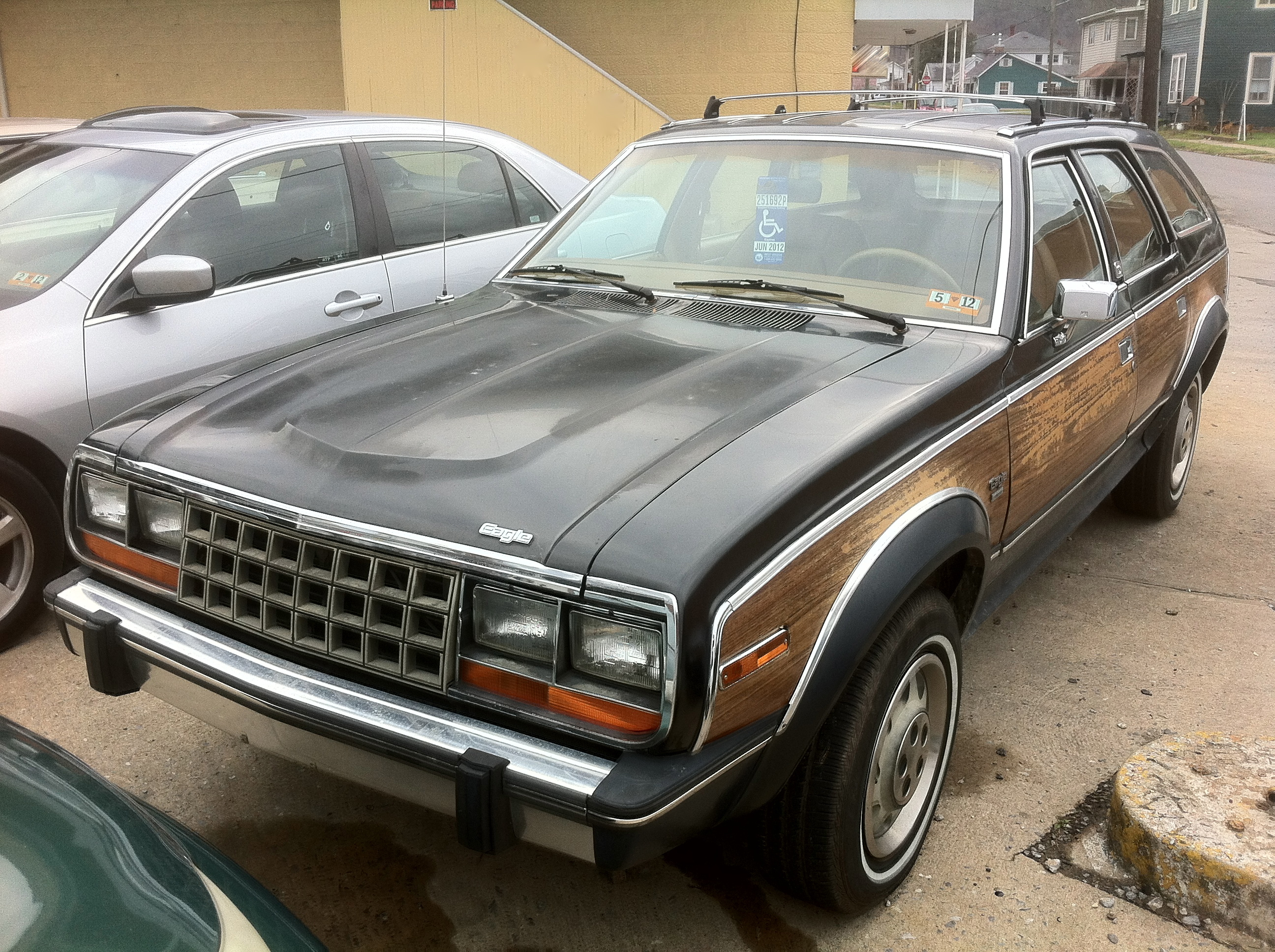Unique and memorable AMC Eagle was a pioneer
Over the past decade, the somewhat traditional SUV has given way to the “crossover utility vehicle.” Although the style and all-weather capability of SUVs have still been desirable, the relatively ungainly handling and ride have not. As a result, the market has become saturated with these new crossovers that provide a car-like driving experience with the security of a little more ground clearance and all-wheel drive. Although it would seem that this type of vehicle is a recent development, one company was about 30 years ahead of the curve.
That company was AMC, and the car was the Eagle. While Subaru was an early pioneer of all-wheel drive in cars, AMC still beat them to the punch. And really, it’s fitting that a company that brought us unusual cars like the Gremlin and Pacer would be the first with a new automotive segment.
The Eagle debuted in the 1980 model year, and was unlike anything on the market. Well, unlike anything outside of AMC. All Eagles were actually quite a bit like the other AMC stablemates. This is because the formula for making an Eagle was to take a contemporary Concord sedan, coupe or wagon; add a few inches of ground clearance; and install four-wheel drive. Later, some Eagles, specifically the SX/4 coupe and Kammback hatchback, would also be based on the Spirit. There was even a convertible; a very low-production model called the Eagle Sundancer that was built by Griffith. Regardless, every Eagle utilized the unibody chassis and independent front suspension of their fair-weathered counterparts, and in turn, had similar on-road handling and ride characteristics.
Unlike the standard AMC lineup, the extra clearance and four-wheel drive offered by the Eagle meant that even when the going got tough, you could keep going. The first iteration of four-wheel drive on the Eagle was a full-time system that utilized a limited-slip center differential to apportion power to whichever set of wheels needed it. It was a system that was also used in other AMC products such as the Jeep Wagoneer. This eventually gave way to the Selec-Trac four-wheel-drive system that allowed for selection between two- and four-wheel drive, mostly as a way to improve fuel economy when driving conditions were still good. This system was simple to use, requiring only the flip of a switch, and in its last iteration aboard the Eagle, allowed for shift-on-the-fly engagement. The responsibility of powering those four wheels initially fell to AMC’s venerable 4.2-liter straight-six. However, a four-cylinder from GM was later made available, eventually replaced by AMC’s own 2.5-liter four. That power was then funneled through either an automatic transmission, or a four or five-speed manual.
Aside from pioneering an entire segment of the automotive landscape, the Eagle also ha/d a couple of other unusual claims to fame. It was made the official vehicle of the National Ski Patrol, and it also participated in a number of SCCA ProRally events. It even had a cameo on the silver screen. Alongside other wonderfully ’80s automobiles like a black Toyota pickup and a heavily modified DeLorean, an Eagle wagon makes an appearance in an early scene of “Back to the Future.”
The Eagle is a delightfully odd vehicle, especially when considering its melting pot of source material. It’s not often that a combination of off-the-shelf parts results in such a distinct product. But sometimes a little bit of creative thinking creates something special, and the Eagle was just that. To think — had AMC only survived a few more decades, the Eagle might’ve been a smash hit. Alas, it wasn’t to be, and instead we’re simply left with a unique and memorable car from a unique and memorable company.
Author’s Note: In response to the many comments on this article, yes, Subaru did indeed have 4WD versions of their cars prior to the introduction of the AMC Eagle. And this does bring up a tricky part in crowning the earliest crossover. Precisely what defines a crossover is the key, one that admittedly isn’t the clearest considering how vague the term is to begin with. Going with the definition of it being a car-like vehicle with 4WD, the Subaru wagons of the ‘70s would have been ahead of the Eagle. The definition I was using was that of a car-like vehicle that has been given noticeably raised ground clearance, and 4WD, particularly full-time 4WD (at least initially), as most modern crossovers have. The Subarus used selectable 4WD, and as far as I could find, didn’t have noticeably increased ride height. The earliest point in 4WD Subaru history I could find mention of different ride height was when they added pneumatically adjustable suspension around 1984.
As a sort of modern equivalent, you could look at it as a Subaru Outback vs. a Subaru Legacy. I would consider the Outback a crossover, for its increased ground clearance, AWD, not to mention its “toughened” exterior styling. The Legacy on the other hand, is very much a car in style and ride height, but it still has AWD. Thus the Eagle, for its increased clearance and slightly tweaked styling (mainly fender flares) seems to me closer to a crossover than the Subaru wagons. I will also admit that the section of my article that started this debate was not written as clearly as I hoped it had been, but I hope that this comment clears things up somewhat as to how I came to my arguable conclusion.


